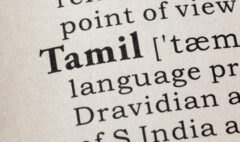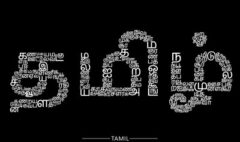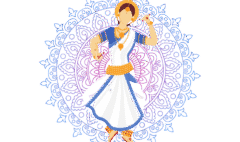An Introduction to Tamilian Wedding Traditions and Phrases
An Introduction to Tamilian Wedding Traditions and Phrases
An Introduction to Tamilian Wedding Traditions and Phrases: A Celebration of Union
A wedding, in any culture, is one of life’s most significant and joyous occasions. It is a celebration of love, of family, and of the coming together of two lives. In Tamil culture, a wedding (திருமணம் – Tirumaṇam) is a particularly vibrant, colorful, and deeply meaningful event, rich with ancient rituals and beautiful traditions. The Tamil wedding traditions are a complex and fascinating tapestry of spiritual ceremonies, social gatherings, and joyful celebrations that often span several days. At the heart of this celebration is the Tamil language, which is used in the sacred chants, the blessings, and the everyday interactions that define the event.
For anyone who is attending a Tamil wedding or for a young person who is learning about their own culture, an understanding of these traditions and the key Tamil marriage vocabulary is essential for a deeper appreciation of the ceremony. This guide will serve as an introduction to some of the key rituals of a traditional Tamil wedding and will provide you with the essential Tamil wedding phrases and cultural phrases to help you navigate and enjoy this beautiful celebration.
The Pre-Wedding Ceremonies: The Joyful Prelude
A Tamil wedding is not a single-day event. The celebrations often begin several days before the main ceremony.
- நிச்சயதார்த்தம் (Niccayatārttam) – The Engagement Ceremony: This is the formal engagement ceremony where the two families meet and make a formal promise of marriage. Rings are often exchanged, and the wedding date is officially fixed. This is the first public announcement of the union.
- நலங்கு (Nalangu): The Nalangu is a fun and playful pre-wedding ritual that is held for both the bride and the groom in their respective homes. It involves applying a paste of turmeric (மஞ்சள் – manjal), sandalwood, and other herbs to the bride and groom’s face and hands. The ceremony is filled with songs and games and is meant to be a time of joyful relaxation and beautification before the main event.
- மெஹந்தி (Mehndi): While traditionally a North Indian custom, the Mehndi ceremony, where the bride’s hands and feet are adorned with intricate henna designs, has become an integral and beloved part of many modern Tamil weddings.
The Main Wedding Day: Key Rituals and Their Meanings
The wedding day itself is a series of beautiful and deeply symbolic ceremonies, usually conducted by a priest (ஐயர் – aiyar) in front of a sacred fire (அக்னி – agni).
The Welcoming:
- மாப்பிள்ளை அழைப்பு (Māppiḷḷai aḻaippu) – Welcoming the Groom: The groom and his family are formally welcomed at the entrance of the wedding hall (கல்யாண மண்டபம் – kalyāṇa maṇṭapam) by the bride’s family. The bride’s brother will often wash the groom’s feet as a sign of respect.
The Core Ceremony:
- காசி யாத்திரை (Kāci yāttirai) – The Kasi Yatra: This is a charming and symbolic ritual. The groom pretends that he is renouncing worldly life to go on a spiritual pilgrimage to Kasi (Varanasi). The bride’s father then intercepts him and persuades him to return and to accept his daughter’s hand in marriage, promising him a life of domestic bliss.
- மாலை மாற்றல் (Mālai māṟṟal) – The Exchange of Garlands: This is one of the most joyful and iconic moments. The bride and groom exchange flower garlands three times. This is their first official act of accepting each other, and it is often a playful moment, with the families lifting the bride and groom up to make it more challenging for them to garland each other.
- ஊஞ்சல் (Ūñcal) – The Swing Ceremony: The couple is seated on a beautifully decorated swing (ஊஞ்சல்). The women of the family sing traditional songs and circle them, washing their feet with milk and offering them blessings. The swinging motion symbolizes the ups and downs of life, which the couple will now face together.
- கன்னிகாதானம் (Kaṉṉikātāṉam) – The Giving Away of the Bride: This is a very emotional and significant moment. The bride’s father places his daughter’s hand in the groom’s hand, formally giving her away and entrusting him with her care and well-being.
- மாங்கல்ய தாரணம் (Māṅkalya tāraṇam) – The Tying of the Thaali: This is the absolute apex of the wedding ceremony, the moment that solemnizes the marriage. The groom ties the “Thaali” (திருமாங்கல்யம் – Tirumāṅkalyam), a sacred yellow thread with a golden pendant, around the bride’s neck. He ties the first of three knots, and his sister typically ties the other two, symbolizing the welcoming of the bride into her new family. At this moment, the guests shower the couple with flowers and turmeric-colored rice (அட்சதை – akṣatai) as a sign of their blessings.
- சப்தபதி (Saptapadi) – The Seven Steps: The couple holds hands and takes seven steps together around the sacred fire, with each step representing a sacred vow for their life together (e.g., to provide for each other, to be strong, to be friends, etc.).
Essential Tamil Wedding Vocabulary and Phrases
Here are the key words and blessings you will hear at a wedding.
The Key People:
- Bride – மணமகள் (Maṇamakaḷ)
- Groom – மணமகன் (Maṇamakaṉ)
- Wedding – திருமணம் (Tirumaṇam) or கல்யாணம் (Kalyāṇam)
– Husband – கணவன் (Kaṇavaṉ)
– Wife – மனைவி (Maṉaivi)
– Family – குடும்பம் (Kuṭumpam)
– Guests – விருந்தினர்கள் (Viruntiṉarkaḷ)
The Blessing:
The most common blessing given to a newly married couple is:
“வாழையடி வாழையாக வாழுங்கள்” (Vāḻaiyaṭi vāḻaiyāka vāḻuṅkaḷ) – This is a beautiful and uniquely Tamil blessing. It literally means “Live like the banana tree.” A banana tree is a symbol of prosperity and continuity because new shoots continuously grow from the base of the parent plant, ensuring the lineage never dies. It is a wish for the couple to have a long, prosperous, and continuous family line.
Another common wish is simply: “திருமண நாள் வாழ்த்துக்கள்” (Tirumaṇa nāḷ vāḻttukkaḷ) – “Happy Wedding Day wishes.”
Conclusion: A Celebration of Culture and Language
The Tamil wedding traditions are a beautiful and profound celebration of love, family, and cultural heritage. Each ritual is rich with symbolism, and the Tamil language is the thread that weaves them all together. For a guest, understanding these traditions and a few of the key Tamil wedding phrases can transform the experience from that of a spectator to that of a more engaged and appreciative participant. For a young person, learning this Tamil marriage vocabulary is a vital part of their cultural education, a window into the beautiful ceremonies that mark the most important moments of life in the Tamil world.










